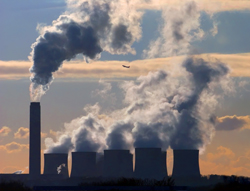Estimating Europe's carbon dioxide fluxes
Climate change is of the greatest challenges facing the world today. The Kyoto Protocol attempted to address the problem by trying to maintain greenhouse gases at a level where they cannot disrupt the climate. The treaty allowed some countries to partially offset their CO2 emissions against carbon accumulated as a result of changes in land use and forest management. However, the reporting of CO2 sources and sinks must be transparent and verifiable in order for the system to work. The Carbon assimilation and modelling of the European land surface (CAMELS) project was established to help EU countries to meet their obligations under the Kyoto agreement. The CAMELS project measured atmospheric transport and terrestrial carbon uptake. The information was used to optimise parameters on the stand scale. In addition, consistent uncertainty bounds on carbon fluxes were produced. The parameter values were applied to the prototype Carbon cycle data assimilation system (CCDAS). The CCDAS was based on the Biosphere energy-transfer and hydrology (BETHY) ecosystem model. The BETHY model used information from satellites to determine optimised values for water status, seasonal changes and total plant cover. The BETHY model was improved by combining the data with atmospheric CO2 concentration observations. The prototype CCDAS and optimised BETHY model were used to gain greater insight into the processes behind the current terrestrial carbon sinks. This was achieved while isolating the contribution from direct land management. Results indicated that changes in terrestrial CO2 fluxes were mainly due to the El Nino-Southern Oscillation. However, long-term CO2 flux indicated a large uptake over the northern hemisphere and tropical regions. This was partly compensated for by the high levels of background CO2 originating from changes in land use. The researchers found that the European terrestrial sink, excluding Russia, was about a third of the regions fossil fuel emissions. The findings by the CAMEL team showed that climate change does not respect international borders and must be tackled at a global level.



